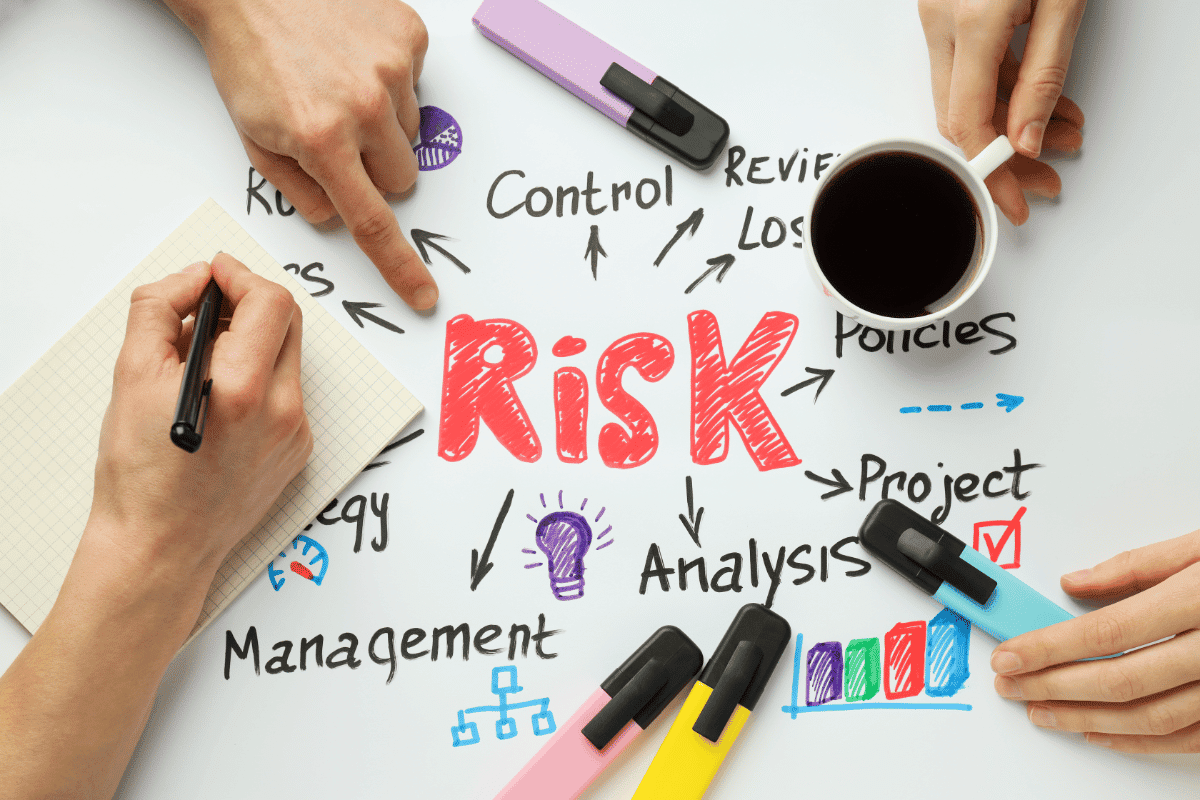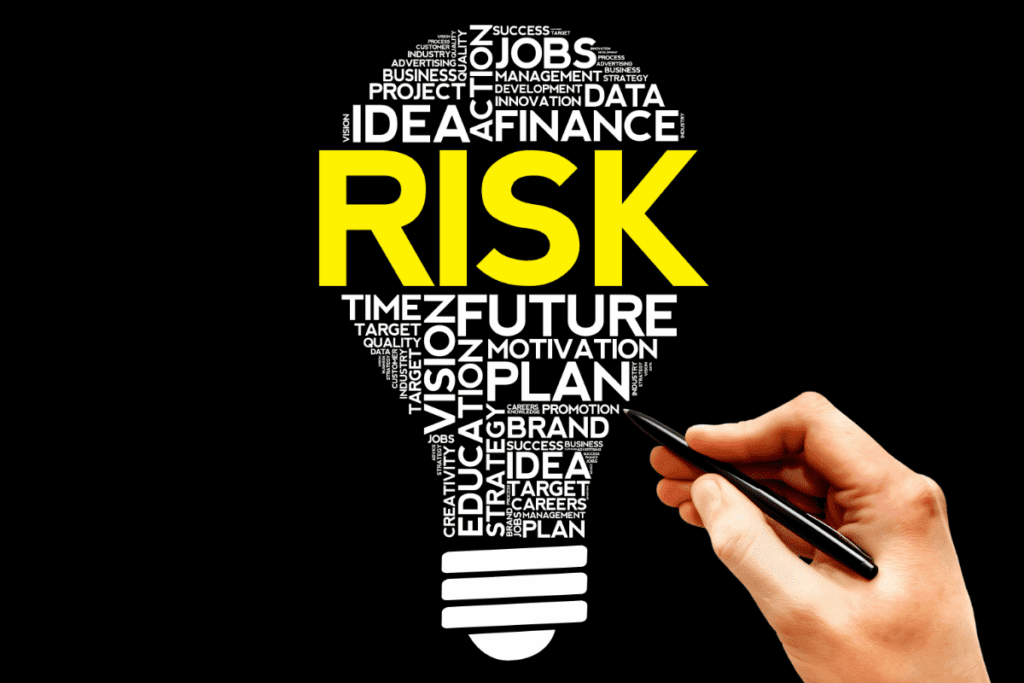Understanding Common Project Risk Categories In Project Management: A Comprehensive Guide

Navigating risks in project management can seem like a daunting task. With countless potential pitfalls, understanding risk categories becomes essential to successful project completion.
This blog post will serve as your comprehensive guide through the labyrinth of risks, demystifying technicalities and providing clear insights. Dive in to transform uncertainty into predictability!
Risk Breakdown Structure Key Takeaways
- Risk categories in project management refer to the classification or grouping of risks based on their common characteristics or nature.
- The importance of risk categories lies in helping project managers and teams better understand, analyze, and manage the various types of risks that may arise during a project.
- There are different types of project risks including technical risks (related to tools used in projects), external risks (outside the control of project managers), organizational risks (related to factors within the organization), and project management risks (specific risks that can impact the success of a project).
- To effectively manage risk categories, it is important for project managers to identify risks through consultation, assign leads to each risk, track and prioritize them for mitigation.
What are Risk Categories in Project Management?

Risk categories in project management refer to the classification or grouping of risks based on their common characteristics or nature. These categories help project managers and teams to better understand, analyze, and manage the various types of risks that may arise during a project.
Definition of risk categories
Risk categories are groups of risks. They are grouped by how they are the same. These groups can be based on where the risk comes from, or what impact it has. Risk categories make it easier to understand and take care of risks in a project.
It helps see all possible risks that can happen during business tasks.
Importance of risk categories in project management
Risk categories matter a lot in project management. They help us find out what types of risks can pop up. These types include costs, timeline, staff, public views and inventory stocks.
Knowing these risks lets us manage them better too. We divide them into two main sections: project-level risks and operational risks. Project-level ones can stop the project from being done well, like going over budget or expanding too much on scope.
Operational ones come from problems when we execute the project tasks. Think about issues with getting goods or producing items on time! Knowing these risk groups lets team leads make plans to dodge or lessen these fears so that we can finish our projects without any hiccups.
What are 4 Types of Project Risks?

There are various types of project risks, including technical risks, external risks, organizational risks, and project management risks.
Technical risks
Technical risks come from the tools we use in projects. They are about tech like software, hardware, and systems. Things can go wrong with these. Think of bugs in the software or a machine breaking down.
These problems can hurt your project. They can make it take longer or cost more money than you planned for. It’s important to keep an eye on technical risks and have plans to deal with them if they happen.
External risks
External risks in project management refer to risks that are outside the control of the project manager. These risks can come from various sources, such as natural disasters like storms, floods, earthquakes, or even human activities like vandalism, sabotage, terrorism, and civil unrest.
External risks are one of the four main types of project risks alongside technical risks, organizational risks, and project management risks. They can further be categorized into subcategories like financial risks, strategic risks, performance risks, and others.
To mitigate external risk factors in a project, it’s important to have contingency plans in place for potential disruptions caused by these external events. This may involve having insurance coverage to address financial losses resulting from unforeseen circumstances.
Organizational risks
Organizational risks are a type of risk in project management that is related to factors within the organization. These risks can be associated with things like project prioritization, governance, customer satisfaction, and workforce risks.
They arise from issues with the company’s risk management plan and can stem from problems with implementation and processes such as procurement, production, and distribution. One common organizational risk is the challenge of meeting deadlines and goals.
This can happen when there is a lack of resources or inadequate project management. It’s important for project managers to identify and address these risks early on to avoid potential delays or failures in achieving project objectives.
Project management risks
Project management risks are specific risks that can impact the success of a project. These risks include things like budget overruns, delays in schedule, and scope creep. They can also involve issues with team dynamics, communication breakdowns, and resource constraints.
To effectively manage these risks, project managers need to identify them early on, assess their likelihood and impact, and develop strategies to mitigate them. By addressing project management risks proactively, projects have a better chance of staying on track and achieving their objectives.
How Do You Manage Risk Categories?
To effectively manage risk categories, project managers must identify risks through consultation, assign leads to each risk, and track and prioritize them for mitigation. Discover the best practices for categorizing risks in this comprehensive guide.
Identifying risks through consultation
To effectively manage risks in a project, it is important to identify them through consultation. Here are some ways to do it:
- Engage with project team members: Consultation with the project team can help uncover potential risks that they may have encountered in similar projects before.
- Seek input from stakeholders: Involving stakeholders in risk identification allows for a broader perspective and helps uncover risks that may impact the project’s success.
- Conduct risk workshops: Facilitating workshops where participants brainstorm potential risks can be an effective way to identify risks through group discussions and collaboration.
- Review lessons learned from previous projects: Examining lessons learned from past projects can provide valuable insights into common risks that should be considered in the current project.
- Use industry resources and best practices: Leveraging industry-specific resources and best practices can help identify risks that are commonly associated with similar projects.
Assigning leads to each risk
Assigning leads to each risk is an important step in project management. It helps in understanding and planning for potential issues. Here are some key points to consider:
- A lead is someone who has expertise in a specific risk type and category.
- Assigning highly skilled project personnel to manage high – risk activities can reduce the chances of problems arising.
- Each lead should be responsible for monitoring and addressing the risks assigned to them.
- Leads should regularly communicate with the project team and stakeholders about the status of the risks they are managing.
- Assigning leads allows for better accountability and ensures that risks are being actively managed throughout the project.
- This approach helps in identifying potential issues early on, enabling proactive risk mitigation strategies.
- Effective risk management, including assigning leads, is essential for achieving project objectives and reducing rework costs.
Tracking and prioritizing risks
Tracking and prioritizing risks is crucial in project management. Here are key steps to follow:
- Identify all potential risks by consulting a wide audience, including stakeholders and team members.
- Assign a lead or responsible person to each identified risk, ensuring accountability for mitigation strategies.
- Create a risk register or log to track all identified risks, including their descriptions, likelihood, impact, and recommended actions.
- Prioritize risks using tools like a risk heat map based on their potential impact on the project objectives and outcomes.
- Regularly review and update the risk register to track any changes in the identified risks and evaluate the effectiveness of mitigation strategies.
- Continuously monitor and control identified risks throughout the project lifecycle to ensure timely response and mitigation.
How to Categorize Common Project Risks?
Look for common areas of risk, make risk management part of internal learning, quantify risks for prioritization, and manage risk categories to accept uncertainty.
Look for common areas of risk
One effective way to manage risk categories in project management is by looking for common areas of risk. By identifying patterns or similarities among different risks, you can develop strategies to address them more efficiently.
This approach, known as the “heaps” approach, involves sorting risks based on common features such as project management pitfalls, risk assessment challenges, and other attributes.
By categorizing risks in this way, you can prioritize your efforts and allocate resources accordingly. It’s important to remember that risk types can be both internal and external factors that may impact your project.
Make risk management part of internal learning
To improve project outcomes, it’s important to make risk management part of internal learning. This means that project teams should continually learn from past experiences and apply those lessons to future projects.
By analyzing the risks faced in previous projects and understanding how they were managed, teams can develop better strategies for identifying and mitigating risks in future endeavors.
Making risk management part of internal learning ensures that the knowledge gained from one project is shared and used to benefit the entire organization. It allows for continuous improvement in managing risks, leading to more successful projects overall.
Quantify risks for prioritization
To effectively manage project risks, it is important to quantify them for prioritization. Here’s how you can do it:
- Assign a numerical value: Assign a numeric value to each risk based on its potential impact and likelihood of occurrence. This can be done on a scale from 1 to 10 or using other relevant units.
- Determine the level of severity: Evaluate the severity of each risk by considering the potential consequences it could have on the project. This can include factors such as cost overruns, delays, or negative impacts on quality.
- Analyze the probability: Assess the probability of each risk occurring by considering historical data, expert opinions, or any available statistical information. This will help determine the likelihood that a risk will actually happen.
- Calculate the overall risk score: Multiply the assigned values for severity and probability to calculate an overall risk score for each identified risk. This will provide an objective measure of their relative importance.
- Prioritize risks: Sort the risks in descending order based on their calculated scores to identify those with the highest priority. This allows you to focus your attention and resources on managing the most critical risks first.
Managing risk categories to accept uncertainty
Managing risk categories is an important aspect of project management. It involves identifying and organizing different types of risks that could potentially impact a project. By categorizing risks, project managers can better understand and prioritize them.
This helps in developing effective strategies to mitigate or accept uncertainty.
One way to manage risk categories is by analyzing each category separately. Project managers can assess the likelihood and potential impact of the risks within each category. They can then determine which risks are acceptable and which ones require mitigation measures.
By accepting certain uncertainties, project managers can make informed decisions on how to allocate resources and plan for contingencies.
Another approach is to regularly review and update the risk categories throughout the course of a project. As new risks emerge or existing ones change, it’s important to reassess their impact on the overall project objectives.
This ongoing monitoring allows for timely adjustments in risk management strategies.
Conclusion
In conclusion, understanding risk categories in project management is crucial for successful project outcomes. By identifying and categorizing risks, project managers can effectively manage and mitigate potential issues.
By following best practices and utilizing a risk breakdown structure, projects can navigate through various types of risks such as technical, external, organizational, and project management risks.
With this comprehensive guide, project teams can proactively address risks to achieve their objectives.
If you liked this article, remember to subscribe to MiamiCloud.com. Connect. Learn. Innovate.
FAQs
1. What are risk categories in project management?
Risk categories in project management are groups or classifications used to organize and identify different types of risks that could potentially impact a project.
2. How do risk categories help in managing projects?
By using risk categories, project managers can systematically assess and prioritize potential risks, develop appropriate strategies for mitigation, and allocate resources effectively to address specific types of risks.
3. What are some common examples of risk categories?
Common examples of risk categories include technical risks (related to technology or equipment), financial risks (related to budgeting or funding), schedule risks (related to time constraints), and external risks (related to factors outside the control of the project team).
4. How can I determine the appropriate risk category for a specific issue?
To determine the appropriate risk category for a specific issue, consider its nature and potential impact on the project objectives. Assess whether it falls under technical, financial, schedule, or external category based on its characteristics and possible consequences.







